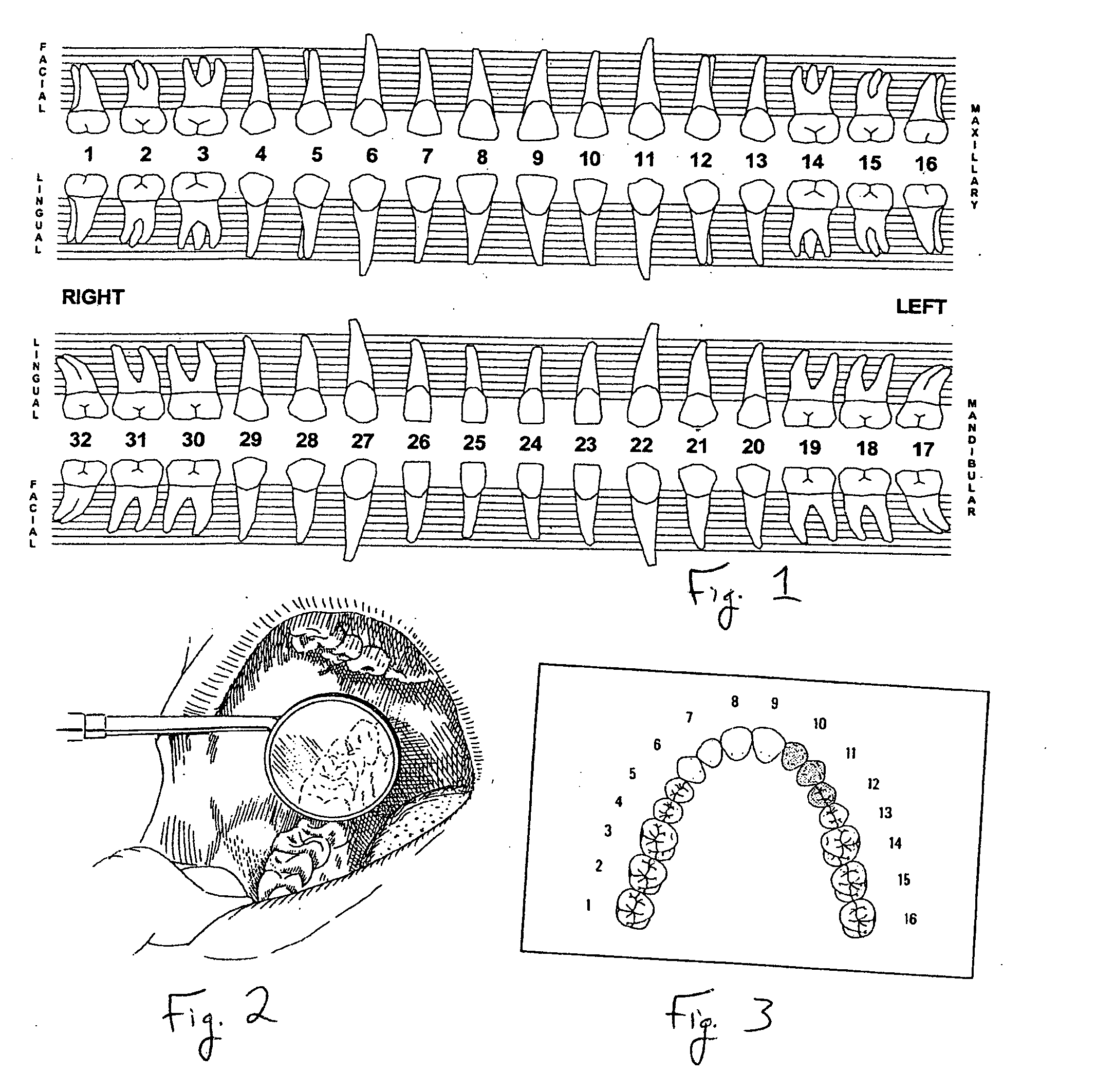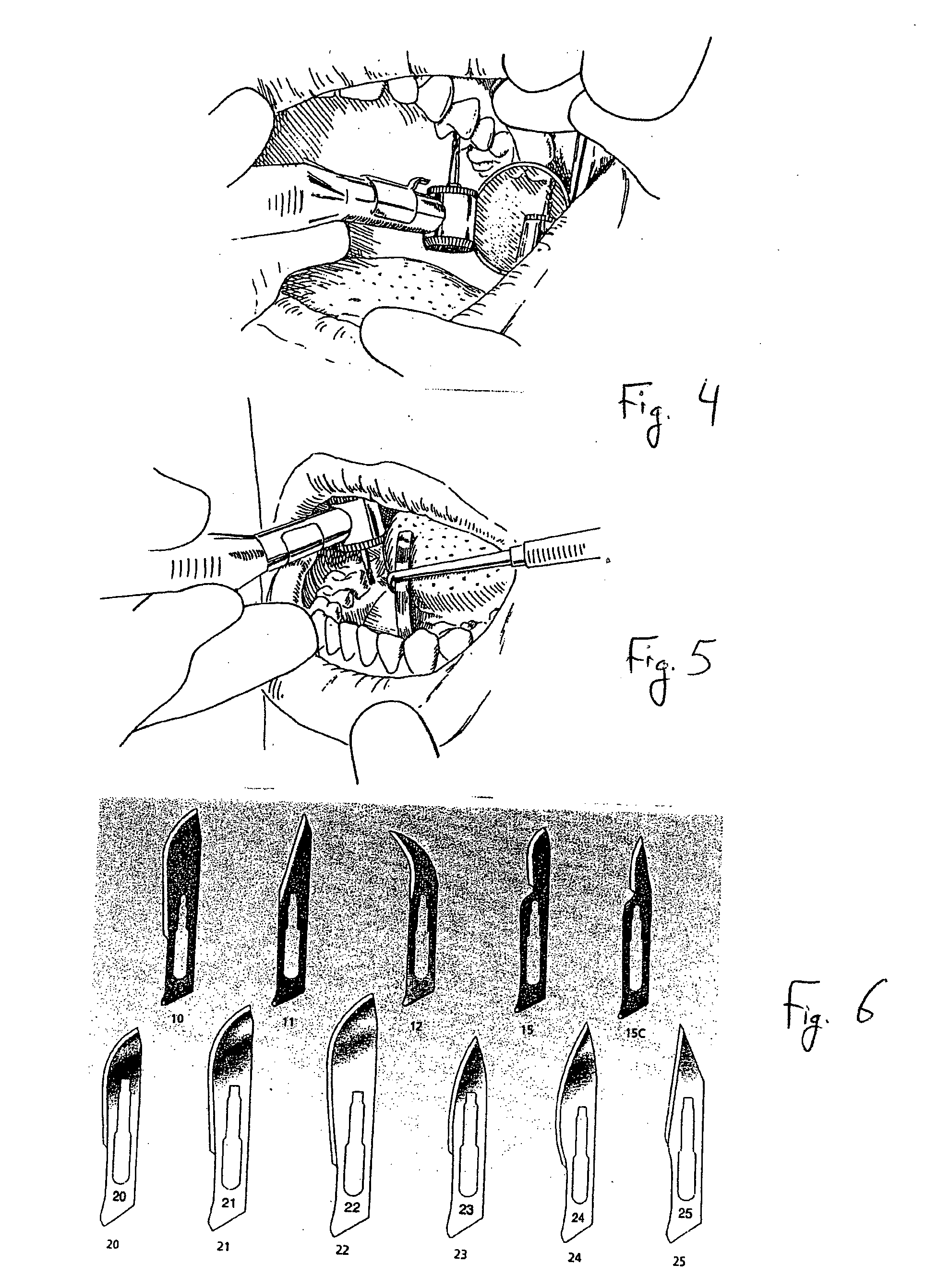Novel surgical blade for finishing composite fillings on the mesial surface of molars and premolars and method of use
a technology of composite fillings and surgical blades, which is applied in the field of surgical blades for finishing composite fillings on the mesial surface of molars and premolars, can solve the problems of unsatisfactory surgical blades, difficult to have steady control, and undesirable us
- Summary
- Abstract
- Description
- Claims
- Application Information
AI Technical Summary
Problems solved by technology
Method used
Image
Examples
Embodiment Construction
[0008] One aspect of the current invention provides a blade with the cutting surface curved in a reverse crescent shape to match the mesial surfaces of the molars and premolars.
[0009] Another aspect of the present invention provides a disposable blade with a cutting surface curved in a reverse crescent shape to match the mesial surfaces of the molars and premolars.
[0010] An aspect of the method of the current invention provides finishing a composite filling on the mesial surfaces of the molars and premolars by using a blade with the cutting surface curved in a reverse crescent shape to match the mesial surfaces of the molars and premolars.
BRIEF DESCRIPTION OF THE FIGURES
[0011]FIG. 1 is a schematic view of adult teeth showing the maxillary numbering of 1-16 and the mandibular numbering of 17-32.
[0012]FIG. 2 is a perspective view of a human mouth showing the cheek obstructs access to the molars and premolars.
[0013]FIG. 3 is a schematic view of the maxillary teeth.
[0014]FIG. 4 is...
PUM
 Login to View More
Login to View More Abstract
Description
Claims
Application Information
 Login to View More
Login to View More - R&D
- Intellectual Property
- Life Sciences
- Materials
- Tech Scout
- Unparalleled Data Quality
- Higher Quality Content
- 60% Fewer Hallucinations
Browse by: Latest US Patents, China's latest patents, Technical Efficacy Thesaurus, Application Domain, Technology Topic, Popular Technical Reports.
© 2025 PatSnap. All rights reserved.Legal|Privacy policy|Modern Slavery Act Transparency Statement|Sitemap|About US| Contact US: help@patsnap.com



